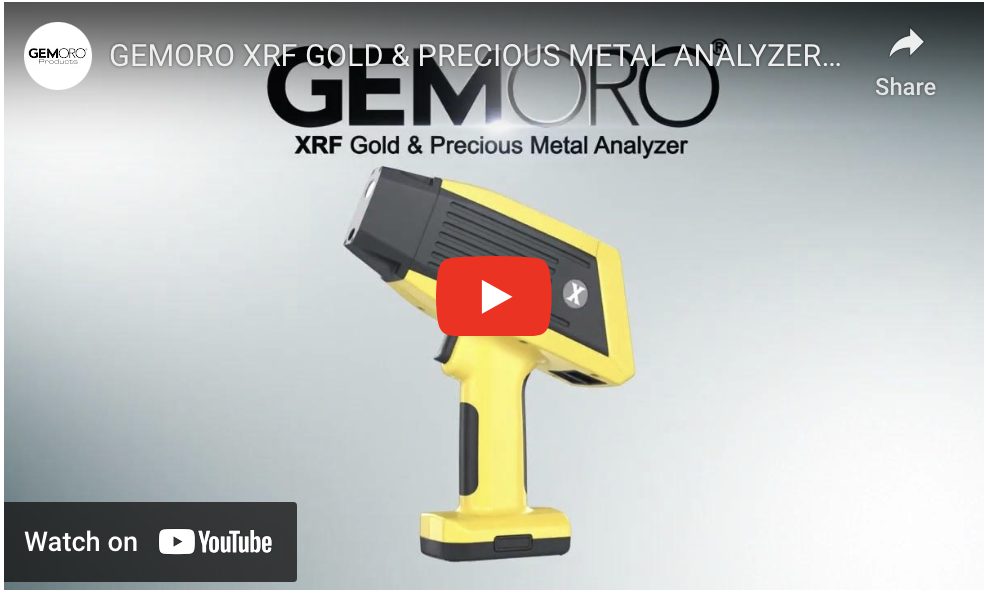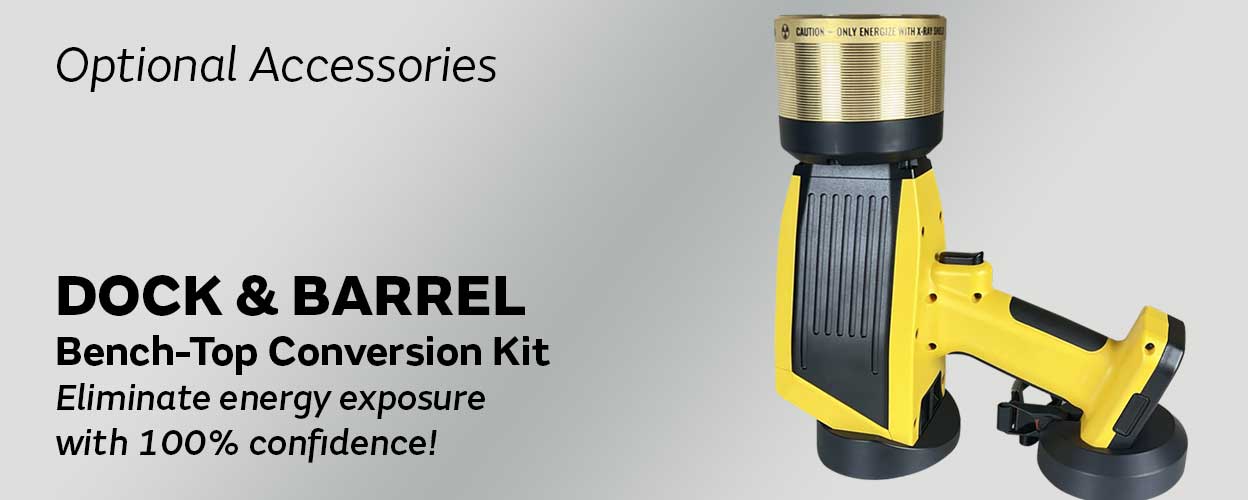Introducing the GEMORO XRF Gold & Precious Metal Analyzer
Manufactured in the USA, the GEMORO XRF Analyzer is top in its class and the best choice for your investment.
The GEMORO XRF is a handheld, portable Energy Dispersive XRF Spectrometer designed for jewelers, pawnshops, appraisers, precious metals buyers, and manufacturers. Users can benefit from this fast and efficient technology, quickly identifying and measuring each element in jewelry, coins, watches, and more. This easy-to-use, fast, and precise XRF is lightweight, yet rugged enough to use all day long.
X-ray Fluorescence or XRF is a non-destructive, analytical method used to determine elemental concentrations of various materials on the surface of what is being analyzed. It’s important to recognize that not all XRF analyzers have the same capabilities.
Item #PMX-5670 List Price $18,999.00 Sale Price $14,999.00
Finance your GEMORO XRF Gold & Precious Metal Analyzer with a Dock and Barrel Benchtop Conversion Kit for as little as $390 per month!
$390 per month at 60 months / $460 per month at 48 months / $579 per month at 36 months*
*Rates shown are subject to an approval process and are for Top Tier Credit Approved Applicants
The GEMORO XRF determines the percentage of each element, thoroughly measuring an area 1.5mm in diameter while reaching a robust depth of 15-20 microns. Five times the typical depth of gold plating which has a thickness of only 1-3 microns. This state-of-the-art instrument represents a high-tech alternative to a destructive fire assay.
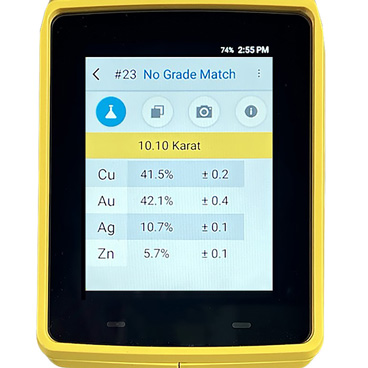
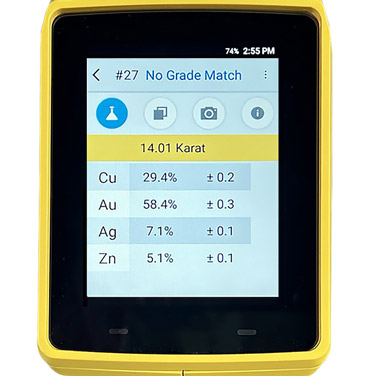
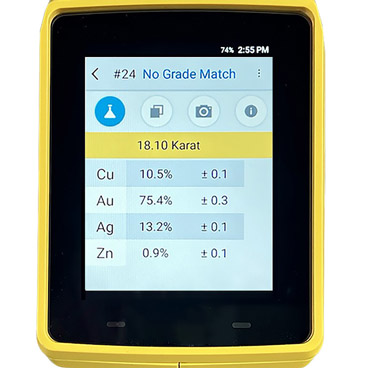
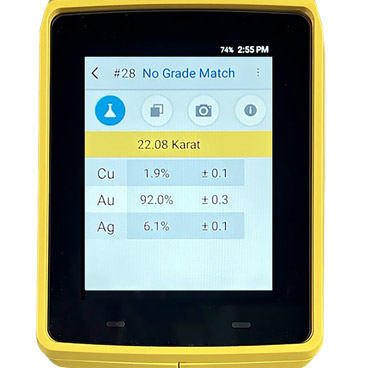
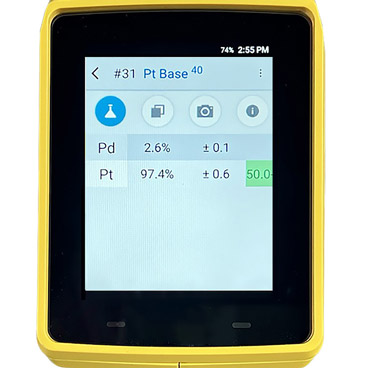
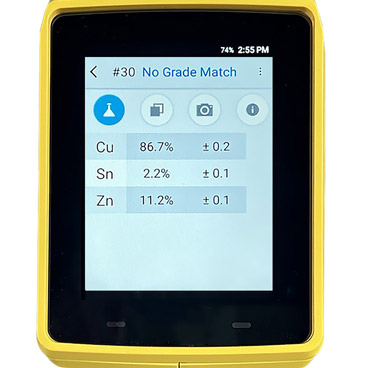
Each unit includes two 6-hour long-lasting rechargeable batteries and an AC adapter. The ability to set a passcode access parameter to manage user access. WIFI/Bluetooth/USB connection capabilities allow you to quickly send sample images and test results to your computer for easy filing. This feature-rich unit comes with a protective Pelican Case to ensure it arrives in perfect condition and enables you to carry it into the field.
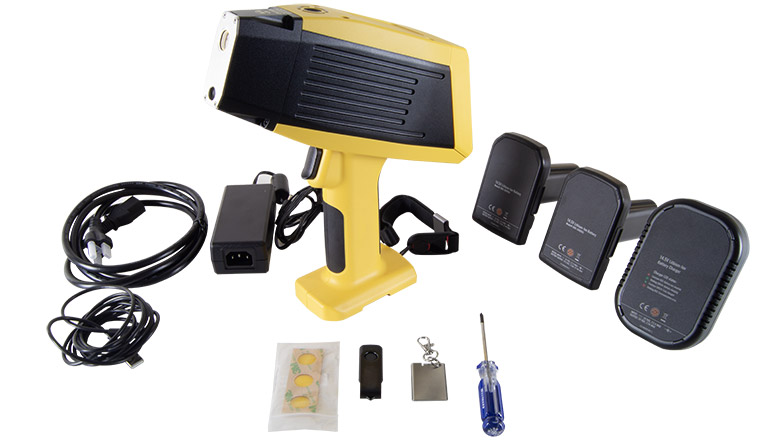
Range of Precious Metal Elements the GEMORO XRF Gold & Precious Metal Analyzer can measure:
- Gold (Au)
- Silver (Ag)
- Lead (Pb)
- Nickel (N)
- Copper (Cu)
- Zinc (Zn)
- Iron (Fe)
- Tungsten (W)
- Tin (Sn)
- Rhodium (Rh)
- Tantalum (Ta)
- Titanium (Ti)
- Cadmium (Cd)
- Palladium (Pd)
- Platinum (Pt)
- Chromium (Cr)
- Manganese (Mn)
- Cobolt (Co)
- Gallium (Ga)
- Bismuth (Bi)
- Zirconium (Zr)
- Molybdenum (Mo)
- Ruthenium (Ru)
- Indium (In)
- Antimony (Sb)
- Vanadium (V)
- Selenium (Se)
- Yttrium (Y)
- Niobium (Nb)
- Hafnium (Hf)
- Rhenium (Re)
Does not measure for Aluminum (Al), Magnesium (Mg), or Silicon (Si).
| SPECIFICATIONS | |
|---|---|
| Testing Area | 1.5mm Diameter |
| Measuring Depth | 15-20 Microns |
| Tube Life Expectancy | 8,000 Hours or 48,000 Tests |
| Tube Specification | 40K V, 200uA Rh Anode , 1 Beam |
| Detector | 7mm2 PiN Diode Detector (active area), 190eV resolution FQHM at 5.95Mn K-Alpha Line |
| Battery Life | Includes AC Adapter and 2 Rechargeable Batteries. 6 Hour Battery Life Per Battery |
| Certifications & Compliance | CE, RoHS, USFDA, Canada RED Act |
| Product Weight | 3.1 Lbs with a Battery |
| Product Dimensions | 7.25 x 10.5 x 4.5 Inches |
| Computer Data Transfer | WIFI, Bluetooth, USB Connectivity to Most Devices |
| Calibration Check | Very Quick – Internal Shutter is 316 Stainless for Totally Automated Calibration and Energy Scale Validation |
| Environmental Temp. Range | 10°F to 130°F at 25% Duty Cycle |
| Security | Password Protected Usage (user level) and Internal Settings (admin) |
| Warranty | 1-Year Warranty |
| Optional Accessories | Dock & Barrel Accessories Available for Purchase |
XRF Spectrometry Data Method
XRF Spectrometry can use either Empirical Methods (calibration curves using standards similar in property to the unknown) or Fundamental Parameters (FP) to arrive at quantitative elemental analysis. The GEMORO XRF Gold & Precious Metal Analyzer uses the superior Fundamental Parameters because it allows elemental analysis to be performed without standards or calibration curves, which is much more preferred. This enables the analyst to use the system immediately, without having to spend additional time setting up individual calibration curves for the various elements and materials of interest. FP, accompanied by stored libraries of known materials, determines not only the elemental composition of an unknown material quickly and easily, but can identify unknown materials as well.
More on How XRF works:
XRF works by striking a sample with an X-ray beam from an X-ray tube, causing characteristic X-rays to fluoresce from each element in the sample. A detector measures the energy and intensity (number of X-rays per second at a specific energy) of each X-ray, which is transformed into an elemental concentration using either a non-standard technique such as fundamental parameters or user-generated calibration curves. The presence of an element is identified by the element’s characteristic X-ray emission wavelength or energy. The amount of an element present is quantified by measuring the intensity of that element’s characteristic X-ray emission.
The Atomic Level
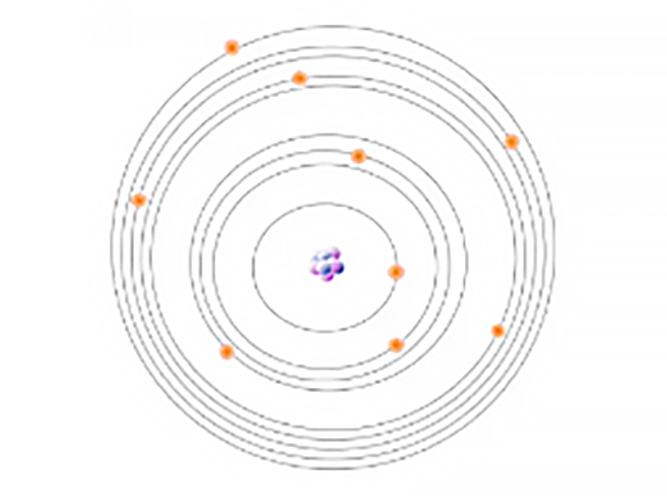
All atoms have a mixed number of electrons. These electrons are arranged in orbitals around the nucleus. Energy Dispersive XRF (EDXRF) typically captures activity in the first three electron orbitals, the K, L, and M lines.
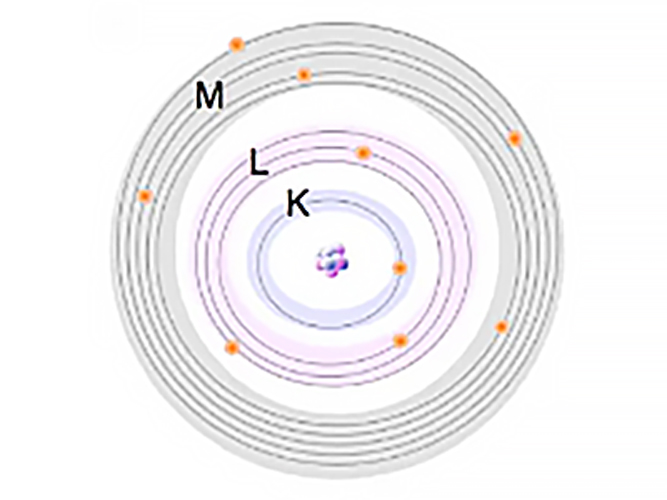
These electrons are arranged in orbitals around the nucleus. Energy Dispersive XRF (EDXRF) typically captures activity in the first three electron orbitals, the K, L, and M lines.
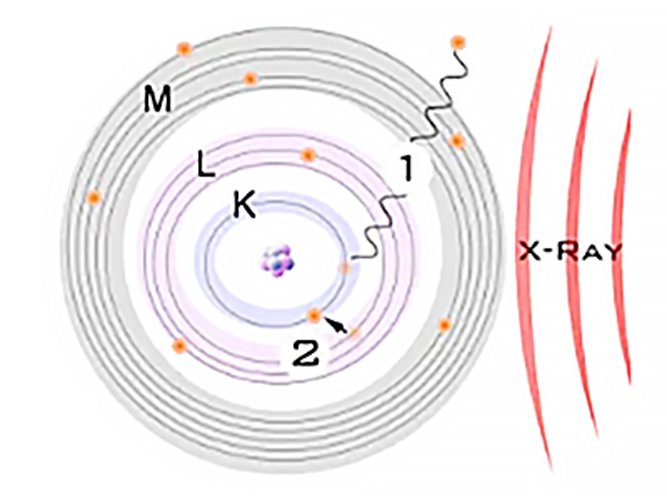
The primary photons from the X-ray tube have high enough energy that they knock electrons out of the innermost orbitals, creating a vacancy (1). An electron from an outer orbital will move into the newly vacant space at the inner orbital to regain stability within the atom (2).
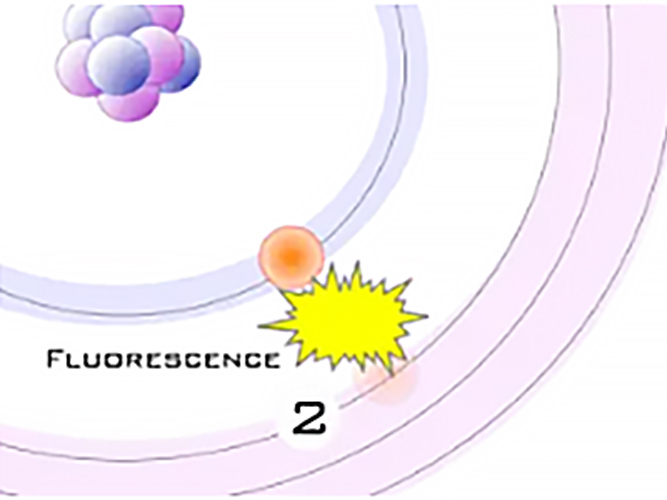
As the electron from the outer orbital moves into the inner orbital, it releases energy in the form of a secondary X-ray photon. This energy release is known as fluorescence. All elements produce fluorescence “characteristic” to themselves. Each element’s fluorescence is unique to itself.
X-RAY
Sample Material
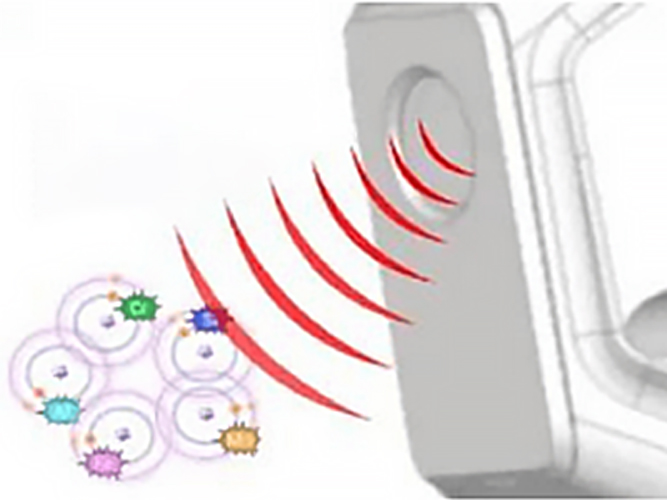
High-energy primary X-ray photons are emitted from an X-ray tube and strike the sample.
DETECTOR
Sample Material
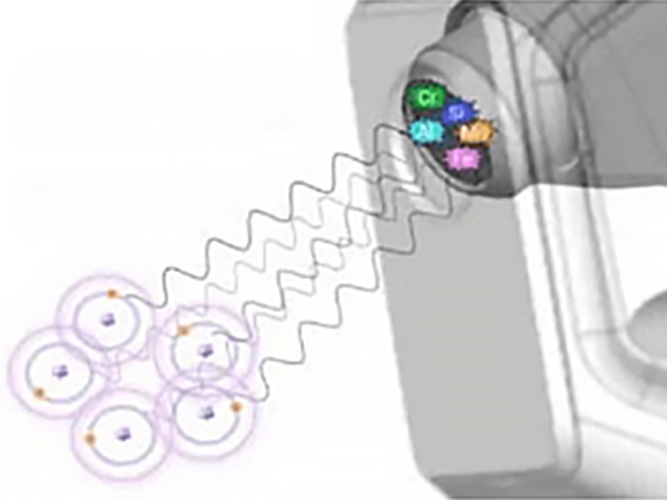
The fluorescent energy is transferred to a detector, where it is absorbed and transferred into an electrical signal and then into a number (digitized).
While XRF analyzing technology is very precise, please recognize that this technology measures the elements present on the surface (AKA a “surface test”), and it should not be considered as a substitute for a fire assay of a core sample.

